#Facebook Retargeting Strategy
Explore tagged Tumblr posts
Text
How to Set Up Facebook Pixel for Advanced Tracking and Retargeting
In today’s competitive digital landscape, leveraging advanced tracking and retargeting methods can significantly enhance your Facebook Ads performance. At Digital Rhetoric, a PPC Marketing Agency in Pune, we understand the importance of using tools like the Facebook Pixel to gather valuable data that allows advertisers to reach their audience effectively. This guide outlines the essential steps to set up the Facebook Pixel for advanced tracking and retargeting, helping you optimize your Facebook Retargeting Strategy and maximize results from your Facebook Ads.
What is Facebook Pixel?

Why Set Up Facebook Pixel for Advanced Tracking?
Implementing advanced Facebook Pixel Tracking allows you to go beyond basic analytics and unlock precise insights into customer behavior. With proper Facebook Pixel Setup, you can track specific events, set up custom conversions, and target audiences more effectively, ultimately leading to an increase in conversions and ROI on your Facebook Ads.
Step-by-Step Guide to Facebook Pixel Setup
To get started with Facebook Pixel for advanced tracking and retargeting, follow these steps:
1. Create Your Facebook Pixel
Go to Events Manager in your Facebook Ads account.
Click on Connect Data Sources and choose Web.
Select Facebook Pixel and give it a name, ensuring it aligns with your brand.
Enter your website URL for optimal setup guidance.
Creating your Facebook Pixel is the first step in advanced tracking. Ensure your Facebook Pixel Setup is accurate to capture all necessary data for improved ad performance.
2. Add Pixel Code to Your Website
Once you’ve created the Pixel, you’ll receive a unique Pixel ID and a code snippet.
Copy the Pixel code and paste it into the header section of your website’s HTML.
Many content management systems (CMS), such as WordPress or Shopify, allow easy integration through plugins or integrations. Alternatively, Google Tag Manager can simplify Pixel implementation.
Adding the Pixel code properly is crucial for accurate Facebook Pixel Tracking. If installed correctly, it allows you to track events like page views, purchases, and lead forms, offering a complete view of your visitor’s journey.
3. Set Up Standard and Custom Events
Standard events include actions like Add to Cart, Purchase, Sign Up, and View Content. They are essential to track conversions and understand user intent.
To add custom events, define unique actions relevant to your business. These may include specific button clicks, page scrolls, or form submissions that align with your sales funnel.
Test your events in Events Manager to ensure they are correctly set up and firing as intended.
Using Facebook Pixel Events allows for advanced tracking of user interactions, helping you optimize ad targeting based on precise data.
4. Configure Custom Conversions
Custom conversions allow you to specify conditions and parameters for events, ensuring you capture only the most relevant interactions.
To set up, go to Custom Conversions in Events Manager, select your Pixel, and specify event criteria (such as URL, keywords, or other parameters).
Custom conversions are particularly useful for businesses aiming to track specific metrics like high-ticket purchases, lead generation, or loyalty actions.
Configuring Custom Conversions optimizes the Facebook Pixel further, providing a comprehensive overview of your most valuable actions.
5. Use Facebook Pixel for Retargeting
One of the most powerful applications of the Facebook Pixel is retargeting. Based on Pixel data, you can create custom audiences for retargeting on Facebook Ads. Here’s how:
In Audience Manager, select Create Audience and choose Custom Audience.
Use Pixel data to retarget visitors who have shown interest in specific products or services.
Adjust your Facebook Retargeting Strategy by segmenting audiences according to behaviors like Add to Cart but not purchased, page visits without conversions, or those who completed high-value actions.
With effective Facebook Retargeting through Pixel, you can reconnect with potential customers who have interacted with your website, increasing your chances of conversion.
6. Optimize Facebook Pixel Events
Use the Event Setup Tool in Facebook Ads Manager to ensure all key interactions are tracked accurately.
Focus on optimizing your events based on campaign goals. For example, prioritize purchase events for e-commerce, lead generation for service-based businesses, or view content events for brand awareness.
Event optimization helps Facebook algorithms to serve ads to users most likely to complete these actions, enhancing the efficiency of your ad budget.
An optimized Facebook Pixel Event setup not only boosts campaign performance but also allows you to make data-driven adjustments based on user behavior.
Tips to Maximize Facebook Ads with Pixel
Regularly Monitor Pixel Data — Use Facebook’s Analytics and Events Manager to check for any discrepancies or low-performing events.
Leverage Lookalike Audiences — Using Pixel data, create Lookalike Audiences to expand your reach to similar users who are more likely to convert.
Experiment with Different Retargeting Approaches — Tailor ads according to customer behavior. For example, use dynamic ads to showcase products viewed by users, or offer exclusive discounts for cart abandoners.
Optimize for Performance Goals — Focus on specific KPIs, like CTR (Click-Through Rate) and conversion rates, to continually adjust your Facebook Retargeting Strategy.
Utilize Conversion API — The Conversion API complements the Facebook Pixel by providing more accurate data in a privacy-conscious way. It’s particularly beneficial in cases of browser restrictions and ad blockers.
Final Thoughts on Facebook Pixel for PPC Campaigns
At Digital Rhetoric, our expertise as a PPC Marketing Agency in Pune allows us to implement strategies that drive substantial results for our clients. The Facebook Pixel is more than a tracking tool; it’s an asset for advanced audience targeting, conversion tracking, and retargeting. By following this Facebook Pixel Setup Guide and optimizing your Facebook Retargeting Strategy with event tracking, custom conversions, and audience segmentation, you can create impactful campaigns that maximize the ROI of your Facebook Ads.
#PPC Marketing Agency in Pune#Facebook Pixel Setup Guide#Advanced Facebook Pixel Tracking#Facebook Retargeting Strategy#Optimize Facebook Pixel Events#Maximize Facebook Ads with Pixel
0 notes
Text
Get your $500 Google ads Credit to promote your business
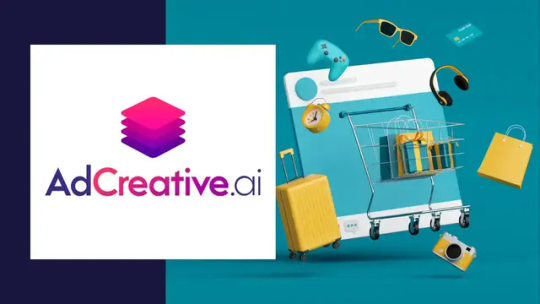
Get your $500 Google ads Credit to promote your business
#Online advertising#Digital marketing#Paid ads#Google Ads#Facebook Ads#Tumblr marketing#Advertising strategies#Audience targeting#Keywords#Ad campaigns#Ad optimization#Retargeting#Ad conversions#Native ads#CTR (Click-Through Rate)#CPC (Cost per Click)#CPM (Cost per Thousand Impressions)#Ad impressions#Sales funnel#Performance metrics#Results analysis#Brand exposure#A/B testing#Video ads#Remarketing#Display ads#Text ads#Landing pages#Geolocation#Engagement metrics
1 note
·
View note
Text
Unlocking Success: The Best Use of Facebook Marketing
In the dynamic landscape of digital marketing, Facebook remains a powerhouse for businesses seeking to connect with their target audience and drive results. With over 2.8 billion monthly active users, Facebook offers an unparalleled platform for businesses to enhance brand visibility, engage with customers, and boost sales. Here's a comprehensive guide on the best use of Facebook marketing to maximize your business potential:

1. Create a Compelling Business Page:
Your Facebook business page is the digital face of your brand. Ensure it's visually appealing, consistent with your brand identity, and includes essential information such as your business hours,

contact details, and a compelling 'About Us' section. Use high-quality images and a captivating cover photo to make a lasting first impression.
2. Leverage Facebook Ads:
Facebook's robust advertising platform allows businesses to target specific demographics, interests, and behaviors. Invest time in creating eye-catching ad creatives, compelling copy, and a clear call-to-action.
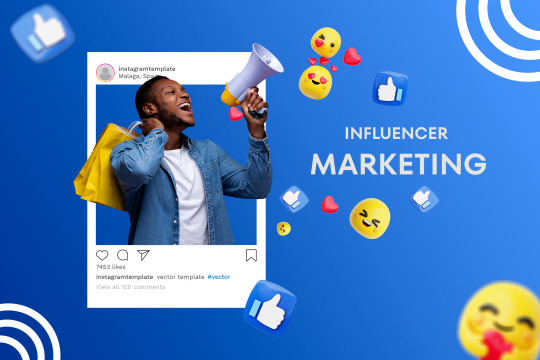
Experiment with different ad formats, such as carousel ads, video ads, and lead ads, to find what resonates best with your audience.
3. Engage with Your Audience:
Social media is all about building relationships. Regularly engage with your audience through comments, messages, and posts. Promptly respond to inquiries, address concerns, and foster a sense of community. Encourage user-generated content by running contests or asking for reviews, turning your audience into brand ambassadors.
4. Utilize Facebook Groups:
Facebook Groups provide a unique opportunity to create a community around your brand or industry. Join relevant groups and participate in discussions, positioning yourself as an authority in your niche. Alternatively, create your own group to foster a sense of belonging among your customers and prospects.
5. Harness the Power of Facebook Analytics:
Facebook Insights offers valuable data on your page performance, audience demographics, and content engagement.

Use these insights to refine your strategy, identify popular content, and optimize your posting schedule. Data-driven decisions are key to a successful Facebook marketing campaign.
6. Optimize for Mobile Users:
A significant portion of Facebook users access the platform on mobile devices. Ensure that your content is mobile-friendly, with concise and visually appealing elements. This includes mobile-optimized ads, responsive landing pages, and a seamless user experience.
7. Implement Facebook Pixel:
Facebook Pixel is a powerful tool that helps you track the actions users take on your website after clicking on your ads. Use this data to measure the effectiveness of your campaigns, retarget website visitors, and optimize for conversions. Facebook Pixel is an invaluable asset for refining your marketing strategy.
8. Run Targeted Contests and Giveaways:
Engage your audience by running contests and giveaways. Encourage participants to like, share, and comment on your posts to increase organic reach. Ensure that the prizes align with your brand and attract your target audience, fostering a positive association with your business.
9. Stay Consistent with Content Strategy:
Consistency is key in maintaining an active and engaged audience. Develop a content calendar and post regularly to keep your audience informed and entertained.
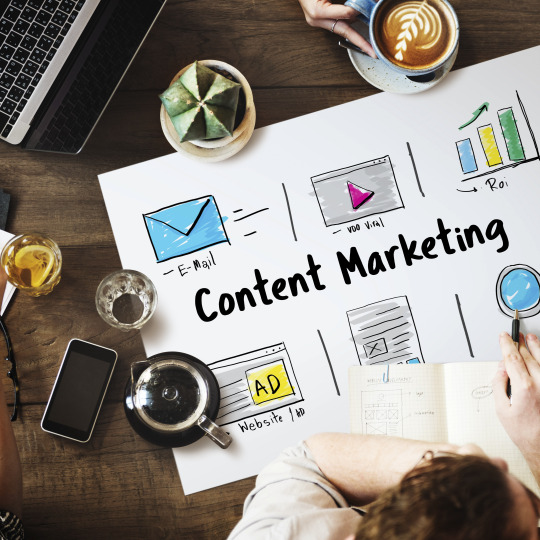
Mix up your content types, including images, videos, articles, and user-generated content, to maintain variety.
10. Test and Iterate:
The digital landscape is ever-evolving, and what works today may not work tomorrow. Continuously test different strategies, analyze results, and iterate based on the feedback and data you receive. This iterative approach will help you stay ahead of the curve and adapt to changing consumer behavior.
#digital marketing#online marketing#seo services#marketing agency#seo expert#seo marketing#best digital marketing agency#facebook marketing#facebook ad agency services#facebook ads#facebook advertising
27 notes
·
View notes
Text
Unleashing the Power of Facebook Marketing: Best Strategies for Success
In the ever-evolving landscape of digital marketing, Facebook continues to reign supreme as a powerhouse platform for businesses looking to connect with their target audience, build brand awareness, and drive sales.

Crafting an effective Facebook marketing strategy is essential for staying ahead in the competitive online market. Here, we explore the best strategies to make the most of your Facebook marketing efforts.
Create a Compelling Business Page: Facebook Business Page is the foundation of your online presence. Optimize it by providing complete and accurate information, using high-quality visuals, and incorporating your brand's unique personality.

Regularly update your profile and cover photos to keep your page fresh.
Content is King: Develop a content strategy that resonates with your audience. Use a mix of engaging text, eye-catching visuals, and videos. Experiment with different content types to see what works best for your target demographic. Consistency is key, so establish a posting schedule and stick to it.
Leverage Facebook Ads: Facebook's robust advertising platform allows you to reach highly targeted audiences. Utilize Facebook Ads to promote your products or services, boost posts, and drive website traffic.

Experiment with different ad formats, such as carousel ads, video ads, and slideshow ads, to see what generates the best results.
Harness the Power of Video: Video content has become increasingly popular on Facebook. Utilize live videos, tutorials, behind-the-scenes glimpses, and storytelling to engage your audience. Facebook's algorithm often favors video content, leading to higher reach and engagement.
Engage with Your Audience: Actively respond to comments, messages, and reviews on your page. Encourage discussions, ask questions, and run polls to foster a sense of community.

By engaging with your audience, you build trust and loyalty, which can translate into customer retention and advocacy.
Run Contests and Giveaways: Create excitement and boost engagement by running contests and giveaways. Encourage users to like, share, and comment for a chance to win. This not only increases your reach but also creates a buzz around your brand.
Utilize Facebook Analytics: Regularly analyze Facebook Insights to understand the performance of your content and ads. Identify trends, track key metrics, and adjust your strategy accordingly.

This data-driven approach ensures that you're making informed decisions to optimize your Facebook marketing efforts.
Implement Retargeting Strategies: Make use of Facebook Pixel to track website visitors and retarget them with relevant ads. This helps re-engage potential customers who have shown interest in your products or services, increasing the likelihood of conversion.
Collaborate with Influencers: Partnering with influencers can significantly expand your reach.
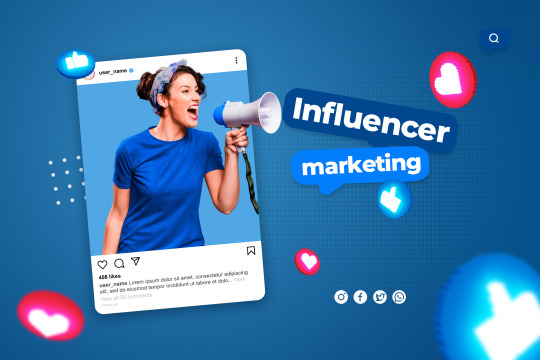
Identify influencers whose audience aligns with your target demographic and collaborate on sponsored content or promotions.
Stay Updated on Algorithm Changes: Facebook's algorithm evolves, impacting how content is displayed in users' feeds. Stay informed about algorithm changes and adjust your strategy accordingly. Currently, meaningful interactions and quality content are prioritized, so focus on creating content that sparks genuine engagement.
Conclusion:
Mastering Facebook marketing requires a combination of creativity, consistency, and adaptability. By implementing these strategies, you can unlock the full potential of Facebook as a marketing powerhouse, driving brand growth and achieving your business objectives. Keep refining your approach based on data and feedback, and watch as your brand flourishes in the dynamic world of social media marketing.
#facebook marketing#digital marketing#influencers#seo#linkedin#facebook ads#social media marketing#search engine optimization#online marketing#learn digital marketing#seo expert#marketing agency#facebook advertising#facebook ad manager#facebook ad agency services#facebook ad boost#social media#socialmedia#facebook
20 notes
·
View notes
Text
What Is Paid Media Marketing? An Introduction for Beginners
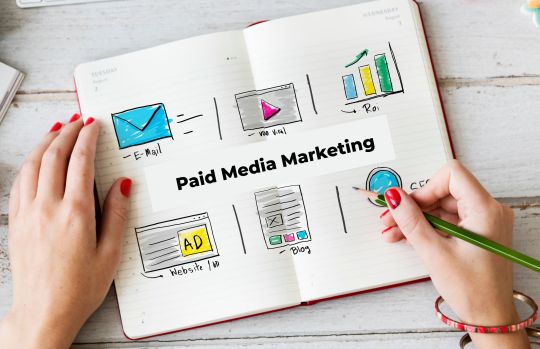
In the fast-paced digital landscape, businesses are constantly seeking effective strategies to enhance their online presence and reach their target audience. Paid media marketing has emerged as a powerful tool to achieve these goals. This comprehensive introduction to paid media marketing will help beginners understand its fundamental concepts, benefits, and how to implement it effectively within their digital marketing strategy.
Understanding Paid Media Marketing
Paid media marketing refers to any form of digital advertising where businesses pay to have their content displayed on various platforms. This can include pay-per-click (PPC) advertising, social media ads, display ads, and more. Unlike organic marketing efforts, paid media provides immediate visibility and reach, allowing businesses to target specific audiences with precision.
Key Components of Paid Media Marketing
1. Pay-Per-Click (PPC) Advertising
Among paid media, PPC advertising is one of the most often used types. Advertisers pay a charge under this arrangement for each click on their advertisement. It is primarily used on search engines like Google and Bing. PPC ads appear at the top of search engine results pages (SERPs), providing instant visibility.
Benefits of PPC:
Immediate Results: Unlike SEO, which takes time to build, PPC can drive traffic to your website instantly.
Targeted Advertising:PC enables accurate targeting according to geography, demographics, keywords, and other factors.
Cost Control: Advertisers can set budgets and only pay for actual clicks, making it cost-effective.
2. Social Media Advertising
Social media ads are another critical component of paid media marketing. Platforms like Facebook, Instagram, LinkedIn, and Twitter offer robust advertising options, allowing businesses to target users based on their interests, behaviors, and demographics.
Benefits of Social Media Ads:
Extensive Reach: Social media platforms have billions of active users, offering a vast audience for your ads.
Engagement: Social media ads can be interactive, encouraging users to engage through likes, shares, comments, and clicks.
Advanced Targeting: Detailed targeting options enable advertisers to reach specific segments of their audience effectively.
3. Display Advertising
Display ads are visual advertisements that appear on websites within the Google Display Network and other ad networks. They can be in the form of banners, images, or videos and are designed to attract attention and drive traffic to the advertiser's site.
Benefits of Display Ads:
Visual Appeal: Display ads can be highly creative and visually engaging, capturing users' attention effectively.
Retargeting Opportunities: Display ads can be used for retargeting campaigns, reaching users who have previously visited your website.
Brand Awareness: They are excellent for building brand awareness and keeping your brand top-of-mind among potential customers.
Implementing Paid Media Marketing
To effectively implement paid media marketing, it’s essential to understand the key steps involved:
1. Define Your Goals
Start by defining clear objectives for your paid media campaigns. Whether you aim to increase website traffic, generate leads, or boost sales, having specific goals will guide your strategy and help measure success.
2. Choose the Right Platforms
Select the platforms that align best with your target audience and business goals. For example, if you’re targeting professionals, LinkedIn might be more effective, whereas Instagram could be better for reaching younger demographics.
3. Conduct Keyword Research
For PPC campaigns, thorough keyword research is crucial. Identify the keywords your target audience is searching for and bid on those that are most relevant to your products or services.
4. Create Compelling Ad Content
Create compelling and pertinent advertising content that appeals to your target market. High-quality visuals, compelling copy, and a clear call to action (CTA) are essential components of successful ads.
5. Set Budgets and Bids
Determine your advertising budget and set appropriate bids for your ads. Consider the cost-per-click (CPC) or cost-per-impression (CPM) and ensure you’re getting the most value for your investment.
6. Monitor and Optimize
Keep a close eye on your sponsored media initiatives' results. Use analytics tools to track key metrics such as click-through rates (CTR), conversion rates, and return on investment (ROI). Based on these insights, optimize your campaigns for better performance.
Benefits of Paid Media Marketing
1. Enhanced Visibility
Paid media provides immediate visibility for your brand, placing your ads in front of a broad audience. This is especially beneficial for new businesses looking to establish an online presence quickly.
2. Targeted Reach
Paid media allows for precise targeting, ensuring your ads are seen by the right people. Better conversion rates and increased engagement rates follow from this.
3. Measurable Results
With paid media, you can track and measure the performance of your campaigns in real-time. This data-driven approach enables you to make informed decisions and continuously improve your strategy.
4. Cost-Effective
Paid media can be highly cost-effective, especially with models like PPC, where you only pay for actual clicks. With careful budget management, you can achieve significant results without overspending.
Conclusion
Paid media marketing is a powerful tool that can significantly enhance your digital marketing efforts. By understanding its components, implementing it strategically, and continuously optimizing your campaigns, you can achieve your business goals effectively. Partnering with a reputable PPC company and Digital Marketing services provider like Flexsin can help you navigate the complexities of paid media and maximize your return on investment. Embrace the power of paid media marketing and watch your business thrive in the digital landscape.
2 notes
·
View notes
Text
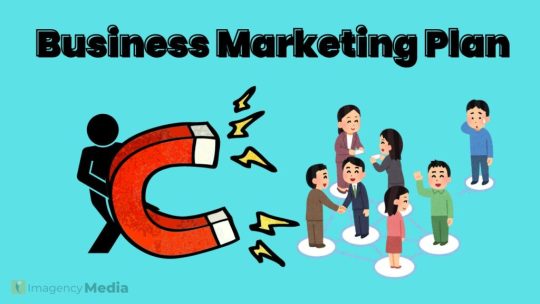
In the bustling world of e-commerce, standing out can be both a challenge and an opportunity for small businesses. Crafting a well-rounded marketing plan is essential to gaining visibility, driving sales, and building a loyal customer base. Whether you're just starting out or looking to refine your existing strategies, a structured marketing plan can set the foundation for success. Here’s a comprehensive guide to developing a marketing plan tailored for a small e-commerce business.
Understand Your Market and Audience Before diving into marketing tactics, it's crucial to have a deep understanding of your market and target audience. Conduct market research to identify your ideal customers, their needs, preferences, and shopping behaviors. Use surveys, interviews, and social media insights to gather data. Analyze your competitors to understand their strengths, weaknesses, and the market gaps you can exploit. Key Questions to Answer: Who are your ideal customers? What are their pain points and needs? How do they prefer to shop online? What are your competitors doing well, and where are their shortcomings?
Define Your Unique Value Proposition (UVP) Your Unique Value Proposition (UVP) differentiates your business from competitors. It should clearly articulate why customers should choose your products or services over others. Your UVP should focus on the unique benefits and features of your offerings, such as superior quality, exceptional customer service, or exclusive products. Steps to Develop a UVP: Identify what makes your products or services unique. Highlight benefits that resonate with your target audience. Communicate your UVP clearly across all marketing channels.
Set Clear Marketing Objectives Setting clear and measurable marketing objectives is essential for tracking progress and ensuring that your efforts align with your business goals. Objectives might include increasing website traffic, boosting conversion rates, or growing your social media following. SMART Objectives: Specific: Clearly define what you want to achieve. Measurable: Ensure you can track progress (e.g., increase website traffic by 30%). Achievable: Set realistic goals based on your resources. Relevant: Align objectives with broader business goals. Time-bound: Set a timeline for achieving each objective.
Choose Your Marketing Channels Selecting the right marketing channels depends on where your target audience spends their time. A mix of channels often works best, but it's essential to focus on those that will yield the highest returns. Key Channels to Consider: Social Media: Platforms like Facebook, Instagram, and Pinterest are excellent for brand building and driving traffic. Tailor your content to each platform’s audience and features. Email Marketing: Build and nurture an email list with personalized and targeted campaigns. Regular newsletters, promotional offers, and abandoned cart reminders can drive sales and customer retention. Content Marketing: Create valuable content such as blog posts, videos, and infographics that address your audience’s pain points and interests. Quality content can drive organic traffic and establish your brand as an industry authority. Search Engine Optimization (SEO): Optimize your website and content for search engines to increase organic traffic. Focus on relevant keywords, high-quality content, and a user-friendly website structure. Paid Advertising: Invest in pay-per-click (PPC) campaigns on Google Ads or social media ads to drive targeted traffic. Utilize retargeting strategies to convert previous visitors into customers.
Develop a Content Strategy A well-planned content strategy helps in creating engaging and relevant content that attracts and retains your target audience. Your content should align with your brand’s voice and address the needs and interests of your audience. Content Strategy Components: Content Calendar: Plan your content in advance to ensure consistency. Include blog posts, social media updates, email campaigns, and other content types. Content Types: Diversify your content with articles, videos, infographics, and user-generated content. Engagement: Encourage interaction through comments, shares, and feedback. Respond to customer inquiries and engage with your audience to build relationships.
Leverage Analytics and Track Performance Monitoring and analyzing your marketing efforts is crucial for understanding what works and what needs adjustment. Use analytics tools to track key performance indicators (KPIs) such as website traffic, conversion rates, and customer acquisition costs. Analytics Tools: Google Analytics: Track website traffic, user behavior, and conversion rates. Social Media Insights: Analyze engagement metrics on social media platforms. Email Marketing Metrics: Monitor open rates, click-through rates, and conversion rates from email campaigns. Regularly review your performance data, compare it against your objectives, and adjust your strategies accordingly. Continuous optimization based on data insights will help you stay competitive and achieve better results.
Budget Wisely A well-defined budget ensures that you allocate resources effectively across different marketing channels. Determine how much you can invest in each area and prioritize spending based on potential return on investment (ROI). Budgeting Tips: Allocate Funds: Distribute your budget across channels that align with your goals and audience. Track Spending: Monitor your expenses to avoid overspending and ensure efficient use of resources. Adjust as Needed: Be flexible and adjust your budget based on performance and changing priorities.
Build Strong Customer Relationships Customer retention is as important as acquiring new customers. Focus on building strong relationships through excellent customer service, personalized experiences, and loyalty programs. Retention Strategies: Personalization: Tailor recommendations and communications based on customer behavior and preferences. Loyalty Programs: Reward repeat customers with discounts, points, or exclusive offers. Customer Feedback: Encourage and act on customer feedback to improve your products and services.
Adapt and Innovate The e-commerce landscape is constantly evolving, and so should your marketing strategies. Stay informed about industry trends, new technologies, and changing customer preferences. Be prepared to adapt and innovate to remain competitive and meet your customers’ evolving needs. Staying Ahead: Industry Trends: Follow industry news and trends to stay updated. Emerging Technologies: Explore new technologies and tools that can enhance your marketing efforts. Customer Feedback: Continuously gather and act on customer feedback to improve your offerings. Conclusion Developing a comprehensive marketing plan for your small e-commerce business involves understanding your market, defining your UVP, setting clear objectives, and choosing the right channels. By creating a strategic content plan, leveraging analytics, budgeting wisely, and focusing on customer relationships, you can drive growth and achieve success. Remember, a successful marketing plan is dynamic and should evolve based on performance and market changes. Embrace innovation and stay adaptable to build a thriving e-commerce business.
2 notes
·
View notes
Text
Gaurav Digital: Your Go-To Digital Marketing Freelancer in Mumbai
In today's fast-paced digital world, having a strong online presence is crucial for any business aiming to succeed. Whether you are a small startup or a well-established company, effective digital marketing can make all the difference in reaching your target audience and driving growth. If you are looking for a Digital Marketing Freelancer in Mumbai who can take your business to the next level, look no further than Gaurav Digital.
Why Choose Gaurav Digital?
As a seasoned Digital Marketer in Mumbai, Gaurav brings years of experience and a deep understanding of the ever-evolving digital landscape. Specializing in various aspects of digital marketing, Gaurav is committed to helping businesses thrive online. Here's what sets Gaurav Digital apart:
1. Comprehensive Digital Marketing Services
Gaurav offers a full suite of digital marketing services tailored to your specific needs. From social media management and content creation to paid advertising and email marketing, Gaurav has the expertise to craft strategies that resonate with your audience and achieve measurable results.
2. SEO Expertise
One of the key components of digital marketing is Search Engine Optimization (SEO), and Gaurav excels as an SEO expert. By optimizing your website and content for search engines, Gaurav ensures that your business ranks higher in search results, driving organic traffic and increasing visibility.
3. Customized Solutions
Every business is unique, and Gaurav Digital understands that a one-size-fits-all approach doesn't work. Gaurav takes the time to understand your business goals, target audience, and industry dynamics, creating customized digital marketing strategies that align with your objectives.
4. Proven Track Record
With a portfolio of successful campaigns and satisfied clients, Gaurav has built a reputation as a reliable and results-driven Digital Marketer in Mumbai. Whether you're looking to boost your online presence, increase sales, or improve customer engagement, Gaurav's track record speaks for itself.
5. Personalized Attention
As a freelancer, Gaurav offers the kind of personalized attention that larger agencies often can't provide. You can expect direct communication, quick responses, and a collaborative approach that ensures your vision is realized.
Services Offered by Gaurav Digital
Search Engine Optimization (SEO): On-page and off-page SEO, keyword research, technical SEO audits, and content optimization.
Social Media Marketing: Strategy development, content creation, and community management across platforms like Facebook, Instagram, LinkedIn, and Twitter.
Pay-Per-Click (PPC) Advertising: Google Ads, social media ads, and retargeting campaigns to drive targeted traffic and conversions.
Content Marketing: Blog writing, article writing, video content creation, and more to engage your audience and build brand authority.
Email Marketing: Creating and managing email campaigns that convert leads into customers and nurture existing relationships.
Get in Touch with Gaurav Digital
If you're ready to take your business to new heights, it's time to partner with a dedicated Digital Marketing Freelancer in Mumbai who understands the nuances of the local market and the broader digital landscape. Whether you need an SEO expert to boost your rankings or a comprehensive digital strategy to grow your brand, Gaurav Digital is here to help.
Contact Gaurav today to discuss your digital marketing needs and start building a brighter future for your business.
2 notes
·
View notes
Text
Why important Facebook ads?
Facebook Ads services are crucial for businesses and marketers for several reasons, primarily due to Facebook's vast reach, sophisticated targeting capabilities, and detailed analytics.
Hire Me: https://www.fiverr.com/s/Ayy8VdX
Know About Me: https://rafiqmia.com/
Here's a deeper look into why these services are so important:
1. Massive Audience Reach
Facebook, along with Instagram (also owned by Meta), has a combined audience of over 3.7 billion monthly active users. This provides businesses access to a global audience, enabling them to reach potential customers across different demographics and geographies.
2. Advanced Targeting Options
Facebook Ads offer highly sophisticated targeting options, including:
Demographics: Age, gender, education, job title, etc.
Location: Country, region, city, or even a specific radius around a location.
Interests and Behaviors: Hobbies, interests, online behaviors, purchase intent, etc.
Custom Audiences: Upload customer lists, website visitors, or app users for precise retargeting.
Lookalike Audiences: Find new users who resemble your existing customers.
These targeting capabilities ensure ads are shown to the most relevant audience, enhancing the chances of conversion.
3. Diverse Ad Formats
Facebook Ads offer a range of ad formats to suit different marketing goals and creative needs:
Image Ads: Simple, visual ads that showcase products or services.
Video Ads: Engage users with video content.
Carousel Ads: Feature multiple images or videos in a single ad.
Collection Ads: Allow users to browse and purchase products directly from the ad.
Lead Ads: Collect contact Facebook Ads can be very cost-effective, particularly for small to medium-sized businesses. The platform allows for flexible budgeting, and advertisers can start with as little as a few dollars a day. With proper targeting and ad optimization, businesses can achieve a high return on investment (ROI).
5. Detailed Analytics and Performance Metrics
Facebook provides comprehensive analytics tools to tracinformation directly within Facebook.
Stories Ads: Full-screen ads that appear in between user stories.
This variety allows businesses to choose the best format for their specific campaign objectives, whether it's driving awareness, engagement, or direct sales.
4. Cost-Effective Advertising
k the performance of ad campaigns:
Ad Performance Metrics: Impressions, reach, clicks, and conversions.
Audience Insights: Information about the demographics and behaviors of people interacting with your ads.
Conversion Tracking: Track actions taken on your website or app after interacting with your ad.
A/B Testing: Experiment with different ad creatives, audiences, and placements to find what works best.
These insights help businesses make data-driven decisions, optimize their campaigns, and improve future marketing strategies.
6. Integration with E-commerce and Lead Generation
Facebook Ads integrate seamlessly with e-commerce platforms and CRM systems, making it easy to run campaigns aimed at driving online sales or capturing leads. Features like Facebook Shops, Dynamic Ads, and Lead Generation Forms streamline the process of converting ad interactions into sales or leads.
7. Brand Building and Customer Engagement
Beyond direct sales, Facebook Ads help in building brand awareness and engaging with customers. Through consistent and creative ad campaigns, businesses can reinforce their brand message, build loyalty, and keep their audience engaged with content that resonates.
8. Remarketing Opportunities
Remarketing allows businesses to target users who have previously interacted with their brand, increasing the likelihood of conversion. For example, you can target ads to people who visited your website but didn't complete a purchase, encouraging them to return and complete their transaction.

https://www.fiverr.com/s/Ayy8VdX
2 notes
·
View notes
Text
Using Pay-Per-Click To Drive Results
Need a paid ad campaign that gets results? Well, that depends on what your advertising goal is. Do you want to build brand awareness? Sell products? Get repeat customers?
Depending on what you're trying to do, you should tailor your approach. Paid ad campaigns depend on PPC (Pay-Per-Click) metrics, which rely on the amount you pay every time a customer clicks on an ad. Here are the most common PPC ad campaign goals.
BRAND AWARENESS
Trying to get word out about your brand? PPC campaigns are a great way to do it. Try using Google AdSearch to bid on ads that come up for keyword search results, or buy some Facebook ads for buyers with certain interests.
PRODUCT CONSIDERATION
If your customers already know about your brand but aren't buying, it might be a good idea to keep your products in front of their faces. Try retargeting and remarketing ads through programs like Google Ads Remarketing or Adroll. These programs will display repeat ads to your customers after they've clicked on an ad previously.
LEADS
Some products and services need to be promoted by trained sales teams who can showcase their benefits. If you need leads for your company, try creating a simple landing page for your best product or service. Put your best sales copy on it and use a lead magnet, or white paper / cheat sheet / infographic, to collect emails from visitors.
PRODUCT SALES
Are your customers already likely to buy? Try a PPC campaign using keywords that your customers will be familiar with. Offer coupons, discounts or financing and include these terms with product info like model numbers. Finally, while you're retargeting ads, highlight these offers, warranty information, guarantees or your return policy.
REPEAT SALES
Does your product need replacement, maintenance, accessories or upgrades? Keep your customer motivated to buy by offering features like fast shipping, coupons, discounts and perks. Remarketing is a great strategy here as well; your remarketed ads should display products that are related to what your customer has already bought.
2 notes
·
View notes
Text
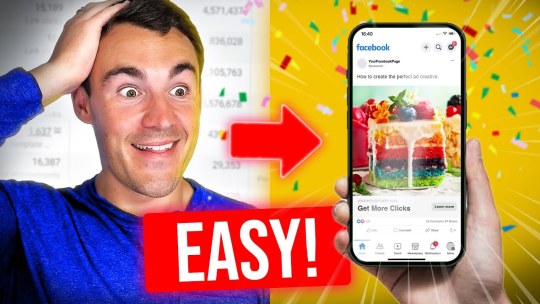
facebook ads manager
How to set up your facebook ads manager
Outline
Introduction to Facebook Ads Manager
Why Facebook Ads Manager is Essential
2.1 Benefits of Using Facebook Ads Manager
2.2 Targeted��Advertising
2.3 Budget Control and Optimization
2. Setting Up Your Facebook Ads Manager Account
3.1 Creating a Business Manager Account
3.2 Linking Facebook Pages and Ad Accounts
3.3 Understanding Account Structure
3. Navigating the Facebook Ads Manager Dashboard
4.1 Overview of Dashboard Sections
4.2 Customizing Columns for Insights
4.3 Utilizing Filters for Data Analysis
4. Creating Effective Ad Campaigns
5.1 Choosing Ad Objectives
5.2 Defining Target Audience
5.3 Setting Budgets and Schedules
5. Designing Compelling Ad Creatives
6.1 Image and Video Best Practices
6.2 Crafting Engaging Ad Copy
6.3 Call-to-Action Strategies
6. Understanding Ad Metrics and Analytics
7.1 Key Performance Indicators (KPIs)
7.2 Interpreting Data for Optimization
7.3 A/B Testing for Improved Performance
7. Troubleshooting Common Issues in Facebook Ads Manager
8.1 Ad Disapprovals and Policy Compliance
8.2 Billing and Payment Concerns
8.3 Technical Glitches and Solutions
8. Advanced Tips for Facebook Ads Manager
9.1 Dynamic Ads and Product Catalogs
9.2 Retargeting Strategies
9.3 Lookalike Audiences for Expansion
9. Staying Updated with Facebook Ads Manager Changes
10.1 Facebook Updates and New Features
10.2 Adapting Strategies to Algorithm Changes
10. Success Stories: Brands Excelling with Facebook Ads Manager
Common Pitfalls to Avoid
12.1 Overlooking Analytics Insights
12.2 Ignoring Audience Feedback
12.3 Neglecting Mobile Optimization
11. Future Trends in Facebook Advertising
13.1 Integration with Virtual Reality
13.2 Artificial Intelligence in Ad Targeting
13.3 Social Commerce Opportunities
12. Conclusion
13. FAQs About Facebook Ads Manager
15.1 How can I set a realistic budget for my Facebook ad campaigns?
15.2 What is the relevance score, and how does it impact ad performance?
15.3 Can I run ads on Instagram through Facebook Ads Manager?
15.4 How often should I update my ad creatives for optimal results?
15.5 Are there any industry-specific tips for successful Facebook advertising?
Facebook Ads Manager: Navigating the Landscape of Digital Advertising
In today’s digital age, advertising has evolved into a sophisticated landscape, and Facebook Ads Manager stands at the forefront of this revolution. As businesses strive to connect with their target audience in meaningful ways, understanding the intricacies of Facebook Ads Manager becomes paramount.
Introduction to Facebook Ads Manager
Facebook Ads Manager is a comprehensive tool designed to empower businesses in creating, managing, and optimizing their Facebook and Instagram advertisements. It provides a centralized platform for every aspect of the advertising process, from setting up campaigns to analyzing performance metrics.
Why Facebook Ads Manager is Essential
Benefits of Using Facebook Ads Manager
In the vast realm of online advertising, Facebook Ads Manager offers a myriad of benefits that can significantly impact the success of your marketing campaigns.
Targeted Advertising
One of the key advantages of Facebook Ads Manager is its unparalleled ability to target specific demographics, interests, and behaviors. This level of precision ensures that your ads are reaching the right audience, maximizing the return on investment.
Budget Control and Optimization
Unlike traditional advertising methods, Facebook Ads Manager allows you to have complete control over your budget. You can set daily or lifetime budgets, giving you the flexibility to optimize spending based on real-time performance.
✔ads manager: Our agency will be your facebook ads manager
Creating a Business Manager Account
Before delving into the world of Facebook advertising, it’s essential to set up a Business Manager account. This centralized hub lets you manage all aspects of your business on Facebook, including ad accounts, pages, and team members.
Linking Facebook Pages and Ad Accounts
Once your Business Manager account is ready, the next step is linking your Facebook pages and ad accounts. This streamlined process ensures seamless coordination between your organic content and paid advertisements.
Understanding Account Structure
Facebook Ads Manager operates within a hierarchical structure, comprising ad campaigns, ad sets, and individual ads. Understanding this framework is crucial for effective campaign management and optimization.
Navigating the Facebook Ads Manager Dashboard
Overview of Dashboard Sections
The dashboard is the command center of your advertising efforts. Familiarizing yourself with its various sections, such as Campaigns, Ad Sets, and Ads, is vital for efficient navigation.
Customizing Columns for Insights
Tailoring the columns displayed on your dashboard provides deeper insights into ad performance. By including relevant metrics like click-through rate and conversion rates, you can make data-driven decisions.
Utilizing Filters for Data Analysis
Filters are powerful tools within Facebook Ads Manager that allow you to isolate specific data for analysis. Whether you’re examining the performance of a single ad or an entire campaign, filters enhance your ability to draw actionable conclusions.
Creating Effective Ad Campaigns
Choosing Ad Objectives
Every successful ad campaign starts with a clear objective. Whether it’s increasing brand awareness, driving website traffic, or generating leads, selecting the right ad objective sets the foundation for success.
Defining Target Audience
The heart of effective advertising lies in understanding your target audience. Facebook Ads Manager lets you define your audience based on demographics, interests, and behaviors, ensuring your message resonates with the right people.
Setting Budgets and Schedules
The financial aspect of advertising is a crucial factor. With Facebook Ads Manager, you can set daily or lifetime budgets, control ad delivery schedules, and allocate resources strategically for optimal results.
Designing Compelling Ad Creatives
Image and Video Best Practices
Visual appeal is paramount in capturing audience attention. Learn the best practices for creating eye-catching images and videos that convey your message effectively.
Crafting Engaging Ad Copy
Compelling ad copy complements striking visuals. Explore strategies for writing copy that resonates with your audience and encourages them to take the desired action.
Call-to-Action Strategies
A well-crafted call-to-action (CTA) is the final nudge that converts potential customers into actual ones. Discover effective CTA strategies that prompt users to engage with your ads.
Understanding Ad Metrics and Analytics
Key Performance Indicators (KPIs)
Monitoring key performance indicators is crucial for gauging the success of your campaigns. From click-through rates to conversion metrics, each KPI provides valuable insights into the effectiveness of your ads.
Interpreting Data for Optimization
Data is only as valuable as your ability to interpret it. Facebook Ads Manager offers a wealth of analytics; understanding how to leverage this data ensures ongoing optimization for better results.
A/B Testing for Improved Performance
A/B testing involves experimenting with different ad elements to determine what resonates best with your audience. Implementing A/B tests within Facebook Ads Manager can lead to valuable insights and improved campaign performance.
Troubleshooting Common Issues in Facebook Ads Manager
Ad Disapprovals and Policy Compliance
Navigating Facebook’s ad policies is essential to prevent disapprovals. Understand the common reasons for ad rejections and ensure compliance with Facebook’s guidelines.
Billing and Payment Concerns
Smooth ad operations require hassle-free billing. Address common billing and payment issues to ensure uninterrupted advertising.
Technical Glitches and Solutions
In the digital realm, technical glitches can occur. Familiarize yourself with common technical issues and their solutions to maintain a seamless advertising experience.
Advanced Tips for Facebook Ads Manager
Dynamic Ads and Product Catalogs
Take your advertising to the next level with dynamic ads and product catalogs. Learn how to showcase relevant products to users who have shown interest, increasing the likelihood of conversions.
Retargeting Strategies
Retargeting allows you to re-engage users who have interacted with your brand. Explore retargeting strategies to bring back potential customers and boost conversion rates.
Lookalike Audiences for Expansion
Lookalike audiences enable you to reach users similar to your existing customer base. Understand how to leverage this feature for audience expansion and increased brand visibility.
Staying Updated with Facebook Ads Manager Changes
Facebook Updates and New Features
The digital landscape is ever-evolving, and so is Facebook Ads Manager. Stay abreast of the latest updates and features to ensure your advertising strategies remain cutting-edge.
Adapting Strategies to Algorithm Changes
Facebook’s algorithms determine ad delivery and visibility. Learn how to adapt your strategies to algorithm changes for continued success in reaching your target audience.
Success Stories: Brands Excelling with Facebook Ads Manager
Explore real-world success stories of businesses that have leveraged Facebook Ads Manager to achieve remarkable results. Gain inspiration and insights from their journeys to apply to your own campaigns.
Common Pitfalls to Avoid
Overlooking Analytics Insights
Failure to analyze and act upon analytics insights can hinder your advertising success. Avoid common pitfalls by regularly reviewing performance data and making data-driven decisions.
Ignoring Audience Feedback
Audience feedback is invaluable for refining your ad strategy. Pay attention to comments, messages, and reviews to understand your audience’s sentiments and adjust your approach accordingly.
Neglecting Mobile Optimization
With a significant portion of users accessing Facebook on mobile devices, neglecting mobile optimization can lead to missed opportunities. Ensure your ads are mobile-friendly for a seamless user experience.
Future Trends in Facebook Advertising
Integration with Virtual Reality
The future of advertising may involve immersive experiences through virtual reality. Explore the potential integration of virtual reality into Facebook Ads Manager for innovative and engaging campaigns.
Artificial Intelligence in Ad Targeting
Harness the power of artificial intelligence for more precise ad targeting. Learn about the emerging trends and tools that utilize AI to enhance the effectiveness of your campaigns.
Social Commerce Opportunities
As social commerce gains momentum, discover how Facebook Ads Manager can facilitate direct shopping experiences within the platform. Stay ahead of the curve by exploring social commerce opportunities.
Conclusion
In conclusion, Facebook Ads Manager is not just a tool; it’s a powerhouse for businesses aiming to thrive in the digital marketplace. From precise targeting to creative ad design and continuous optimization, mastering the nuances of Facebook Ads Manager can elevate your advertising game to unprecedented heights.
FAQs About Facebook Ads Manager
1. How can I set a realistic budget for my Facebook ad campaigns?
Setting a realistic budget involves understanding your business goals, audience size, and the expected cost per result. Start small, monitor performance, and adjust accordingly.
2. What is the relevance score, and how does it impact ad performance?
The relevance score measures the relevance and engagement level of your ads. Higher scores often lead to lower costs and better placement within users’ feeds.
3. Can I run ads on Instagram through Facebook Ads Manager?
Yes, Facebook Ads Manager allows seamless integration with Instagram. You can create and manage your Instagram ads within the same platform.
4. How often should I update my ad creatives for optimal results?
Regularly updating ad creatives prevents ad fatigue and keeps your content fresh. Consider refreshing your creatives every few weeks to maintain audience interest.
5. Are there any industry-specific tips for successful Facebook advertising?
Each industry has its nuances, but universal principles like understanding your audience, compelling creatives, and continuous optimization apply. Tailor your strategy based on your industry’s unique characteristics.
#facebookads#digitalmarketing#facebook#marketing#socialmediamarketing#instagramads#facebookmarketing#socialmedia#facebookadvertising#marketingdigital#instagram#seo#digitalmarketingagency#business#onlinemarketing#ecommerce#advertising#facebookpage#facebooklive#branding#facebookadstips#ads#facebooktips#entrepreneur#marketingtips#facebookbusiness#marketingstrategy#facebookpost#fbads
3 notes
·
View notes
Text
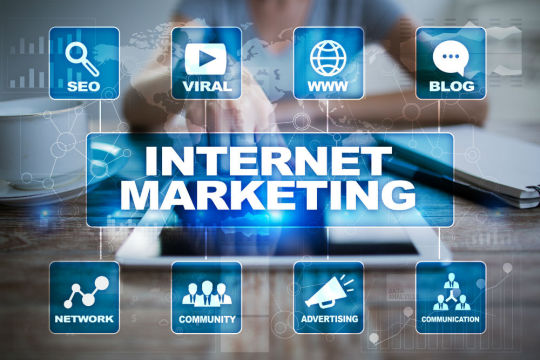
Benefits of Small Business Internet Marketing
The significance of internet marketing for small businesses cannot be overstated. As the online landscape continues to evolve, businesses must adapt to stay competitive. Small businesses, in particular, can leverage internet marketing strategies to amplify their presence, reach a broader audience, and drive growth. This article explores the myriad benefits that small businesses can reap from embracing internet marketing techniques.
Enhanced Visibility and Reach
Internet marketing opens the door to a vast audience that traditional marketing methods often struggle to reach. With the right strategies in place, small businesses can enhance their visibility across various online platforms. From social media channels to search engine results pages (SERPs), internet marketing enables businesses to connect with potential customers on a global scale. By optimizing their online presence, small businesses can attract leads and expand their reach beyond geographical boundaries.
Cost-Effectiveness
Unlike traditional advertising avenues such as print or television, internet marketing offers cost-effective solutions tailored to small businesses with limited budgets. With targeted advertising options available on platforms like Google Ads and Facebook Ads, businesses can allocate their marketing spend more efficiently. Additionally, techniques like search engine optimization (SEO) and content marketing provide long-term value without the recurring costs associated with traditional advertising.
Measurable Results and Analytics
One of the standout advantages of internet marketing is its ability to provide actionable insights through comprehensive analytics. Small businesses can track various metrics, including website traffic, conversion rates, and customer engagement, in real-time. This data empowers businesses to make informed decisions, refine their strategies, and optimize their marketing efforts for maximum effectiveness. With access to detailed analytics, small businesses can continuously adapt and improve their online campaigns to achieve better results.
Targeted Marketing Campaigns
Internet marketing enables small businesses to create highly targeted marketing campaigns tailored to specific demographics, interests, and behaviors. Through tools like audience segmentation and retargeting, businesses can deliver personalized messages to their target audience, increasing the likelihood of conversion. By understanding their customers' needs and preferences, small businesses can craft compelling marketing campaigns that resonate with their audience on a deeper level.
Improved Customer Engagement and Interaction
Interactivity lies at the heart of internet marketing, allowing small businesses to engage with their audience in meaningful ways. Through social media platforms, email marketing, and live chat features, businesses can foster direct communication with their customers. This level of engagement builds trust, strengthens brand loyalty, and encourages repeat business. By actively listening to customer feedback and addressing their concerns, small businesses can forge lasting relationships that drive sustained growth.
Global Reach with Local Appeal
Small businesses no longer face the constraints of local markets thanks to the global reach afforded by internet marketing. While reaching a global audience is valuable, maintaining a local appeal remains crucial for many small businesses. Internet marketing allows businesses to strike the perfect balance, tailoring their message to resonate with both local and global audiences. Whether through geo-targeted ads or localized content, small businesses can establish themselves as trusted brands within their communities while reaching customers worldwide.
Enhanced Brand Awareness and Authority
Building a strong brand presence is essential for small businesses looking to stand out in a crowded marketplace. Internet marketing offers numerous avenues for increasing brand awareness and establishing authority within a niche. Through content marketing initiatives such as blogs, videos, and podcasts, small businesses can showcase their expertise and provide value to their audience. Consistent branding across multiple online channels reinforces brand identity and fosters trust among consumers.
Increased Sales and Revenue
Ultimately, the primary goal of any marketing effort is to drive sales and generate revenue. Internet marketing excels in this regard by providing small businesses with the tools and strategies to attract qualified leads and convert them into customers. By optimizing their conversion funnels, streamlining the purchasing process, and leveraging persuasive copywriting techniques, small businesses can boost sales and revenue streams. With a well-executed internet marketing strategy in place, small businesses can achieve sustainable growth and long-term success.
Internet marketing holds immense potential for small businesses seeking to thrive in today's digital landscape. From enhancing visibility and reach to driving sales and revenue, the benefits are abundant. By harnessing the power of internet marketing, small businesses can level the playing field, compete with larger competitors, and carve out their place in the market. With strategic planning, creativity, and a commitment to delivering value to their audience, small businesses can unlock new opportunities for growth and success.
FAQs
1. What are the essential components of a successful internet marketing strategy for small businesses?
A successful internet marketing strategy for small businesses typically includes elements such as search engine optimization (SEO), social media marketing, content marketing, email marketing, and paid advertising. Each component plays a vital role in attracting, engaging, and converting potential customers online.
2. How long does it take to see results from internet marketing efforts?
The timeline for seeing results from internet marketing efforts can vary depending on various factors, including the competitiveness of the industry, the effectiveness of the strategies employed, and the consistency of implementation. While some results may be noticeable in the short term, achieving significant and sustainable growth often requires a long-term commitment to internet marketing.
3. Is internet marketing suitable for all types of small businesses?
Yes, internet marketing can benefit small businesses across various industries and niches. Whether you're a local brick-and-mortar store, an e-commerce venture, or a service-based business, there are internet marketing strategies that can help you reach your target audience, drive engagement, and grow your business.
4 notes
·
View notes
Text
Retargeting Audiences on Facebook: Best Practices for Maximizing ROI

1. Understand Your Audience Segmentation
The first step in an effective Facebook Retargeting strategy is audience segmentation. Instead of targeting all visitors with the same message, segment your audience based on behavior. For example, you can retarget users who:
Viewed a product page but didn’t purchase
Abandoned their shopping cart
Engaged with your Facebook page or posts but didn’t click through to your site
This strategy allows you to create highly relevant ads that appeal to the specific stage of the customer journey. When you’re running a retargeting campaign, the more tailored your message, the higher the likelihood of converting that user.
Pro Tip: Utilize Facebook’s custom audience feature to build specific audience segments based on pixel data or customer lists.
2. Optimize Ad Creatives for Each Segment
Creativity in retargeting ads can make a huge difference in performance. As a PPC Marketing Agency in Pune, we’ve seen the value of customizing ads based on the audience’s interaction with your brand. A user who abandoned their shopping cart may respond well to a discount offer, whereas someone who only visited a product page might need more product details or testimonials to encourage a purchase.
Here’s how you can optimize your Facebook Ads Optimization:
Use dynamic ads that automatically display the products a user has shown interest in.
A/B test different formats such as carousel ads, videos, and static images to see what resonates with your audience.
Include a strong call-to-action (CTA) that speaks directly to their stage in the purchase funnel.
3. Frequency Cap Your Ads
While retargeting allows you to stay in front of potential customers, overexposure can lead to ad fatigue. To avoid this, it’s essential to implement frequency caps. This ensures that users aren’t bombarded with your ads, which could result in negative brand sentiment.
A common rule is to set your frequency cap between 2 to 3 impressions per user over a short period. This way, users remain aware of your brand without feeling overwhelmed.
4. Leverage Sequential Retargeting
Sequential retargeting takes personalization a step further. Instead of showing the same ad repeatedly, you can serve ads in a sequence that aligns with the user’s journey. For example:
Day 1: Show a product ad to remind them of what they viewed.
Day 3: If no action is taken, show a testimonial or case study to build trust.
Day 5: Offer a discount or incentive to encourage immediate action.
This retargeting strategy builds a story that progresses based on the customer’s interaction with your brand, making the experience more engaging.
5. Incorporate Retargeting into a Broader Funnel Strategy
Retargeting should be part of a broader funnel strategy that includes awareness, consideration, and conversion. Focus on using Facebook retargeting to move users from the consideration phase to conversion, but also ensure you’re running top-of-funnel campaigns to bring in new visitors.
The effectiveness of Facebook Ads Optimization lies in aligning the retargeting with the overall customer journey. If your retargeting campaigns are isolated from your broader strategy, they might feel disconnected, reducing their impact.
6. Use Lookalike Audiences for Expansion
Once your retargeting campaigns are driving conversions, it’s time to scale. Facebook’s Lookalike Audience tool allows you to find new users who are similar to your most valuable retargeting audience. This helps in expanding your reach while maintaining relevance.
Lookalike Audiences can be created based on your custom audience from the retargeting campaigns, ensuring that you are not only re-engaging past visitors but also attracting new, high-quality prospects.
7. Monitor and Optimize Regularly
Lastly, no retargeting strategy is complete without proper monitoring and optimization. As a PPC Marketing Agency in Pune, we constantly analyze performance metrics such as CTR (Click-Through Rate), CPC (Cost-Per-Click), and conversion rates to ensure that the campaigns are driving optimal results.
A few key actions to optimize your campaigns:
Exclude converted users from your retargeting audience to avoid wasting ad spend.
Adjust bids for high-value audience segments.
Regularly refresh your ad creatives to combat ad fatigue.
Conclusion
Retargeting on Facebook is one of the most efficient ways to re-engage users and maximize ROI. By understanding your audience, customizing ad creatives, and implementing a clear retargeting strategy, you can drive meaningful results for your business. As a PPC Marketing Agency in Pune, we specialize in crafting and optimizing retargeting campaigns that help businesses increase their conversion rates.
0 notes
Text
Maksimalkan Kinerja Bisnis Anda dengan Jasa Digital Marketing di Malang, Hub 0889-8964-3555

Hub 0889-8964-3555, Dalam era digital yang semakin maju seperti sekarang ini, memiliki keberadaan online yang kuat bukanlah lagi pilihan, melainkan keharusan bagi setiap bisnis yang ingin berkembang. Kota Malang, dengan potensinya sebagai pusat ekonomi dan wisata di Jawa Timur, menjadi arena yang menjanjikan bagi bisnis-bisbis yang ingin menjangkau lebih banyak pelanggan. Salah satu kunci kesuksesan dalam memanfaatkan potensi ini adalah melalui Jasa Digital Marketing di Malang.
Apa itu Jasa Digital Marketing di Malang?
Jasa Digital Marketing di Malang merupakan layanan profesional yang ditawarkan oleh agen pemasaran digital atau konsultan untuk membantu bisnis meningkatkan kehadiran dan kinerja mereka dalam ranah online. Melalui berbagai strategi dan teknik pemasaran digital, bisnis dapat lebih mudah menjangkau audiens potensial, membangun kesadaran merek, dan meningkatkan penjualan mereka.
Mengapa Pentingnya Jasa Digital Marketing di Malang?
1. Menjangkau Audiens yang Lebih Luas
Dengan menggunakan Jasa Digital Marketing di Malang, bisnis dapat menjangkau audiens yang lebih luas, tidak terbatas oleh batasan geografis. Dengan mengoptimalkan website, mengelola kampanye iklan online, dan berinteraksi melalui media sosial, bisnis dapat terhubung dengan calon pelanggan potensial di seluruh Indonesia, bahkan di seluruh dunia.
2. Meningkatkan Visibilitas dan Kesadaran Merek
Dengan persaingan yang semakin ketat di pasar, memiliki visibilitas yang baik menjadi kunci kesuksesan. Jasa Digital Marketing diMalang membantu bisnis meningkatkan visibilitas online mereka melalui strategi SEO, konten yang menarik, dan kampanye iklan yang tepat sasaran. Selain itu, dengan membangun kesadaran merek yang kuat, bisnis dapat membedakan diri mereka dari pesaing dan memenangkan kepercayaan pelanggan.
3. Meningkatkan Konversi dan Penjualan
Tujuan akhir dari setiap upaya pemasaran adalah meningkatkan konversi dan penjualan. Melalui strategi pemasaran yang tepat, seperti optimasi landing page, retargeting, dan personalisasi konten, Jasa Digital Marketing di Malang membantu bisnis mengubah prospek menjadi pelanggan setia dan meningkatkan pendapatan mereka.

Layanan yang Ditawarkan oleh Jasa Digital Marketing di Malang
- Search Engine Optimization (SEO)
SEO adalah fondasi dari setiap strategi digital marketing yang sukses. Dengan membantu website Anda mencapai peringkat teratas di hasil pencarian Google, Jasa Digital Marketing di Malang membantu meningkatkan lalu lintas organik dan visibilitas online bisnis Anda.
- Social Media Marketing (SMM)
SMM memanfaatkan kekuatan platform media sosial untuk membangun komunitas online, berinteraksi dengan pelanggan, dan mempromosikan produk atau layanan Anda. Dengan menyediakan Jasa Social Media Marketing di Malang, agen pemasaran digital membantu bisnis memanfaatkan potensi penuh dari platform seperti Instagram, Facebook, dan Twitter.
- Pay-Per-Click Advertising (PPC)
Dengan menggunakan PPC, bisnis dapat menampilkan iklan mereka kepada audiens yang ditargetkan secara tepat, dan hanya membayar ketika iklan mereka diklik. Jasa Digital Marketing di Malang membantu merancang dan mengelola kampanye PPC yang efektif untuk meningkatkan visibilitas dan konversi.
- Content Marketing
Konten yang berkualitas tinggi adalah kunci untuk menarik dan mempertahankan audiens online. Melalui Jasa Strategi Konten di Malang, bisnis dapat menciptakan konten yang relevan, informatif, dan menarik untuk menarik perhatian calon pelanggan dan membangun hubungan yang kuat dengan mereka.
Kesimpulan Memanfaatkan Jasa Digital Marketing di Malang merupakan langkah penting bagi setiap bisnis yang ingin berhasil dalam lingkungan digital yang kompetitif. Dengan bantuan para ahli, Anda dapat mengoptimalkan kehadiran online Anda, menjangkau audiens yang lebih luas, dan meningkatkan kesuksesan bisnis Anda secara keseluruhan. Jangan ragu untuk berinvestasi dalam pemasaran digital untuk membawa bisnis Anda ke tingkat berikutnya.

Pertanyaan Umum tentang Jasa Digital Marketing di Malang
Apa itu Jasa Digital Marketing di Malang? Jasa Digital Marketing di Malang adalah layanan profesional yang ditawarkan oleh agen pemasaran digital atau konsultan untuk membantu bisnis di Malang meningkatkan kehadiran mereka secara online melalui berbagai strategi pemasaran digital.
Apa saja layanan yang ditawarkan oleh Jasa Digital Marketing di Malang? Layanan yang biasanya ditawarkan meliputi Search Engine Optimization (SEO), Social Media Marketing (SMM), Pay-Per-Click Advertising (PPC), Content Marketing, email marketing, dan lainnya.
Bagaimana Jasa Digital Marketing di Malang dapat membantu bisnis saya? Jasa Digital Marketing di Malang dapat membantu meningkatkan visibilitas online bisnis Anda, menjangkau audiens target dengan lebih efektif, membangun kesadaran merek, dan meningkatkan penjualan dan konversi.
Berapa biaya yang terlibat dalam menggunakan Jasa Digital Marketing di Malang? Biaya penggunaan jasa digital marketing di Malang dapat bervariasi tergantung pada jenis layanan yang dipilih, skala kampanye, dan kompleksitas proyek. Biasanya, biaya ditentukan berdasarkan konsultasi dan kesepakatan antara bisnis dan agen pemasaran digital.
Berapa lama waktu yang dibutuhkan untuk melihat hasil dari kampanye digital marketing? Waktu yang dibutuhkan untuk melihat hasil dapat bervariasi tergantung pada berbagai faktor, termasuk jenis layanan yang digunakan, kompetisi dalam industri, dan strategi yang diimplementasikan. Namun, hasil yang signifikan biasanya dapat terlihat dalam beberapa bulan setelah kampanye dimulai.
2 notes
·
View notes
Text
Maximizing Facebook Marketing for Rapid Brand Growth
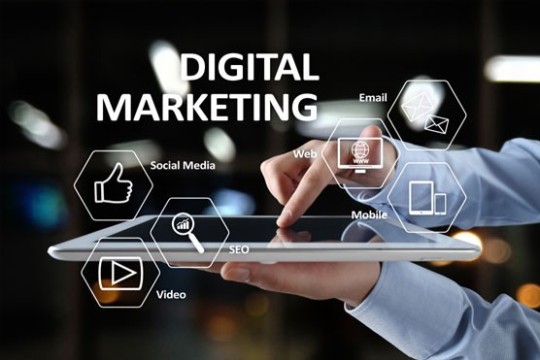
In the fast-paced world of digital marketing, leveraging the power of social media platforms is crucial for achieving rapid brand growth. Facebook, with its vast user base and robust advertising capabilities, stands out as a potent tool for businesses looking to make a significant impact in a short amount of time. Here's a guide on how to make the best use of Facebook marketing to promote your brand effectively and efficiently.
1. Define Clear Objectives:
Before diving into Facebook marketing, outline your specific goals.

Whether it's increasing brand awareness, driving website traffic, or boosting sales, having well-defined objectives will shape your overall strategy.
2. Create a Compelling Business Page:
Your Facebook business page is the digital face of your brand. Optimize it with high-quality visuals, a concise yet engaging description, and essential information about your products or services.

Ensure that your page reflects your brand's identity and values.
3. Develop a Content Strategy:
Craft a content plan that resonates with your target audience. Share a mix of informative, entertaining, and promotional content.

Utilize a variety of media formats such as images, videos, and carousel posts to keep your audience engaged.
4. Leverage Facebook Ads:
Facebook's advertising platform offers precise targeting options, enabling you to reach your desired audience.

Invest in compelling ad creatives and use Facebook's targeting parameters to reach users based on demographics, interests, and behaviors. Consider running time-sensitive promotions to create a sense of urgency.
5. Engage with Your Audience:
Actively respond to comments, messages, and reviews on your page. Foster a sense of community by encouraging discussions and user-generated content.
Engaging with your audience not only strengthens brand loyalty but also enhances your organic reach.
6. Harness the Power of Facebook Groups:
Create or participate in Facebook groups relevant to your industry. This provides an additional platform to connect with potential customers, share valuable insights, and establish your brand as an authority in your niche.
7. Utilize Facebook Live:
Video content is king, and Facebook Live is an excellent way to connect with your audience in real-time. Host live events, Q&A sessions, product launches, or behind-the-scenes glimpses to build a more personal connection with your followers.
8. Run Contests and Giveaways:
Encourage user participation by organizing contests and giveaways. This not only boosts engagement but also helps expand your reach as participants often share these opportunities with their friends.
9. Track and Analyze Performance:
Use Facebook Insights to monitor the performance of your content and ads. Identify what works and refine your strategy accordingly. Adjust your targeting, creative elements, and posting schedule based on the data to optimize results.
10. Implement Retargeting Strategies:
Capitalize on Facebook's retargeting features to reach users who have interacted with your brand but haven't converted. Tailor your messaging to encourage them to take the desired action, whether it's making a purchase or signing up for a newsletter.
By combining these strategies, businesses can make the most of Facebook marketing to achieve rapid brand growth. Consistency, creativity, and strategic use of the platform's features will help propel your brand forward in a short amount of time.
4 notes
·
View notes
Text
Facebook pixel setup to wordpress
Integrating Facebook pixels and setting up retargeting on Builderall pages is a powerful strategy to enhance your Facebook advertising efforts and reach your target audience more effectively. Here's a step-by-step guide to help you with the process:
Step 1: Create a Facebook Pixel:
Log in to your Facebook Business Manager account.
Navigate to the "Events Manager" section.
Click on "Add New Data Source" and select "Facebook Pixel."
Follow the prompts to create your Facebook pixel, providing a name for your pixel and entering your website URL.
Copy the generated pixel code provided by Facebook.
Step 2: Integrate Facebook Pixel with Builderall:
Access your Builderall dashboard and navigate to the page where you want to integrate the Facebook pixel.
Go to the page settings or settings menu, depending on the Builderall interface.
Look for the "Tracking Code" or "Analytics" section.
Paste the Facebook pixel code into the designated area provided by Builderall.
Save the changes and publish the page.
Step 3: Set Up Standard Events (Optional):
In the Facebook Events Manager, navigate to the "Aggregated Event Measurement" section.
Click on "Configure Web Events" and select "Add Events."
Choose the relevant standard events that you want to track on your Builderall pages, such as page views, purchases, or sign-ups.
Follow the prompts to add the selected events and configure their parameters.
Step 4: Create Custom Audiences:
Go to the Audiences section in Facebook Business Manager.
Click on "Create Audience" and select "Custom Audience."
Choose "Website Traffic" as the source for your custom audience.
Define the criteria for your custom audience based on specific actions or pages visited on your Builderall website.
Set the desired time frame for audience inclusion, such as the last 30 days.
Create the custom audience and give it a descriptive name.
Step 5: Set Up Retargeting Campaigns:
Go to Facebook Ads Manager and create a new campaign.
Choose your campaign objective based on your marketing goals, such as traffic, conversions, or lead generation.
Define your target audience, selecting the custom audience you created earlier.
Set up ad creative, including images, ad copy, and call-to-action buttons.
Choose ad placements and budget allocation based on your advertising strategy.
Review and publish your ad campaign.
Step 6: Monitor and Optimize:
Monitor the performance of your retargeting campaigns in Facebook Ads Manager.
Track key metrics such as reach, click-through rate (CTR), conversion rate, and return on ad spend (ROAS).
Use the insights gained to optimize your campaigns, adjusting targeting, ad creative, or budget allocation as needed to improve results.
Continuously test different ad variations and strategies to maximize effectiveness and ROI.
By following these steps, you can effectively set up Facebook pixels, integrate them on Builderall pages, create custom audiences, and launch retargeting campaigns to engage with your audience and drive conversions effectively.
2 notes
·
View notes
Text
How Meta Ads Help in Marketing Your Business
As a expert in Imagency media i will give complete guidlines on this...
In today's digital landscape, businesses must leverage effective advertising strategies to reach their target audiences. Meta Ads, formerly known as Facebook Ads, have become a powerful tool for marketers, offering various features and benefits that can enhance business visibility and drive results. In this article, we’ll explore how Meta Ads can significantly improve your marketing efforts.
1. Extensive Audience Reach
Meta platforms, including Facebook and Instagram, boast billions of active users worldwide. This vast user base provides businesses with an unparalleled opportunity to reach potential customers across different demographics and geographic locations. By utilizing Meta Ads, businesses can connect with a diverse audience and increase their brand visibility.
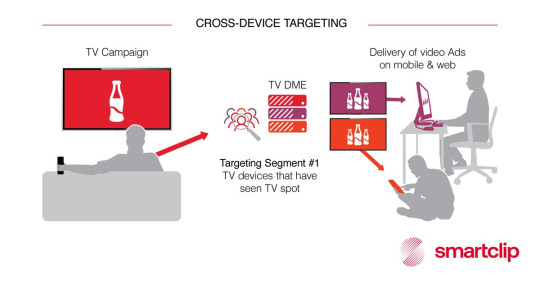
2. Advanced Targeting Capabilities
One of the standout features of Meta Ads is their sophisticated targeting options. Advertisers can reach specific audiences based on various criteria, including:
Demographics: Age, gender, location, and language.
Interests: Hobbies, preferences, and behaviors.
Custom Audiences: Targeting users who have previously interacted with your business, such as website visitors or past customers.
Lookalike Audiences: Finding new customers similar to your existing audience.
This level of precision ensures that your ads are seen by the most relevant users, increasing the likelihood of engagement and conversions.
3. Diverse Ad Formats
Meta Ads support a wide range of ad formats, allowing businesses to choose the best options for their campaigns. Some popular formats include:
Image Ads: Simple yet effective, ideal for showcasing products.
Video Ads: Engaging content that captures attention and tells a story.
Carousel Ads: Multiple images or videos that users can swipe through, perfect for showcasing a collection.
Stories Ads: Full-screen vertical ads that appear between user stories, providing a seamless viewing experience.
This variety enables businesses to create compelling ads that re
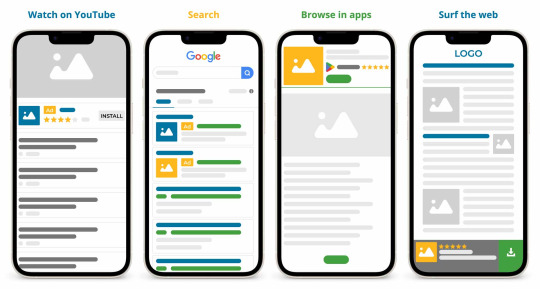
sonate with their target audience.
4. Cost-Effective Marketing
Meta Ads operate on a bidding system, allowing businesses to set their budgets and control their advertising costs. This flexibility makes it possible for companies of all sizes to run effective campaigns. Advertisers can choose between cost-per-click (CPC) and cost-per-impression (CPM) models, ensuring that they can maximize their return on investment.
5. Enhanced Brand Awareness
Meta Ads are an excellent tool for building brand awareness. By consistently displaying ads to your target audience, you can increase visibility and recognition of your brand. Engaging ad formats, such as videos and interactive content, can further enhance user engagement, fostering a stronger connection between the audience and your brand.
6. Retargeting Capabilities
Retargeting is a powerful strategy that allows businesses to reconnect with users who have previously interacted with their brand. With Meta Ads, you can create custom audiences to retarget users who visited your website, added products to their cart, or engaged with your content. This approach helps nurture leads and increases the chances of conversion by reminding potential customers of their interest in your products or services.
7. Comprehensive Analytics and Insights
Meta Ads provide robust analytics tools that allow businesses to track the performance of their campaigns. Advertisers can access detailed metrics, such as reach, engagement, clicks, and conversion rates. This data is invaluable for understanding the effectiveness of your ads and making data-driven decisions to optimize future campaigns.
8. Seamless Integration with E-commerce
For e-commerce businesses, Meta Ads offer features like product catalogs and shopping ads, making it easy to showcase products directly on the platform. These features allow customers to browse and shop without leaving the app, creating a seamless shopping experience and driving sales.
Conclusion
Incorporating Meta Ads into your marketing strategy can significantly enhance your business’s online presence and drive meaningful results. With extensive reach, advanced targeting options, diverse ad formats, and powerful analytics, Meta Ads offer a comprehensive solution for businesses looking to grow and engage with their audience. By leveraging these tools effectively, you can maximize your marketing efforts and achieve your business goals.
Contact today for meta ads services
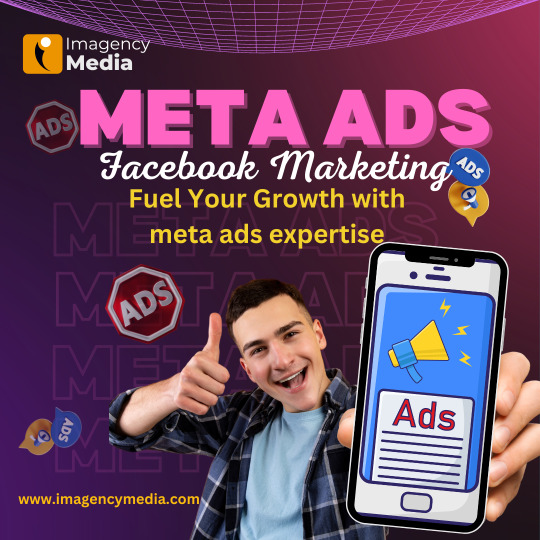
3 notes
·
View notes